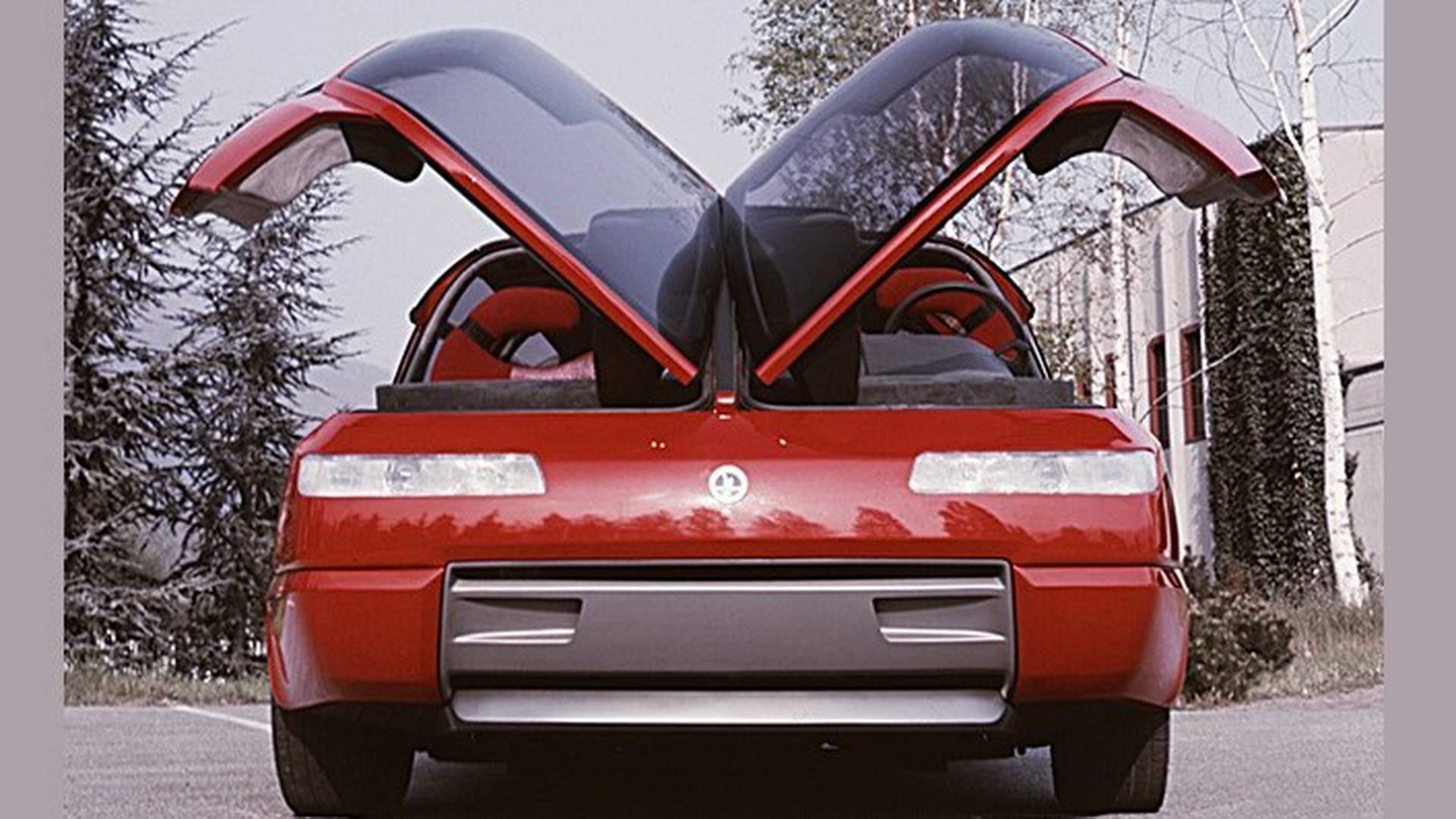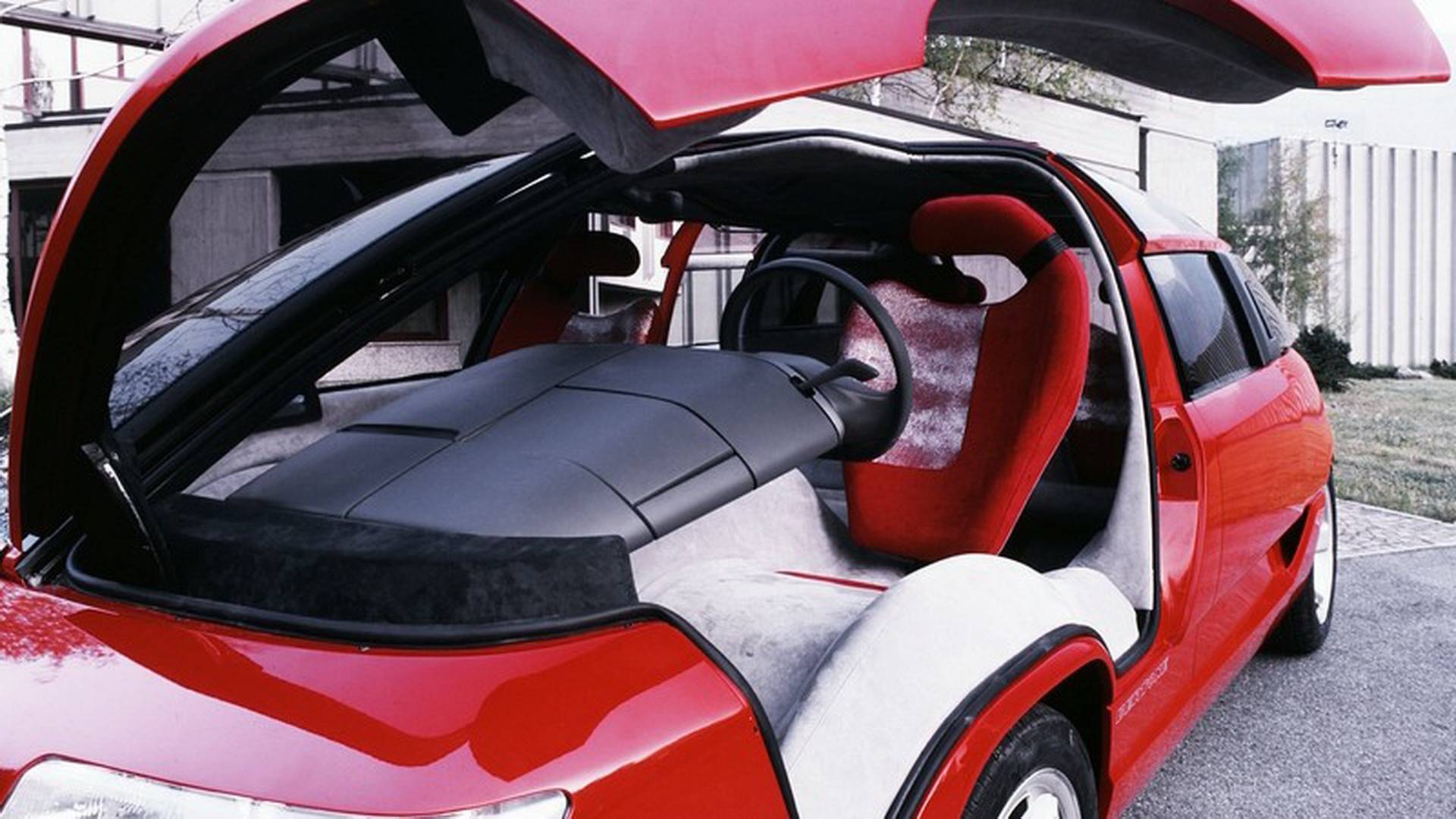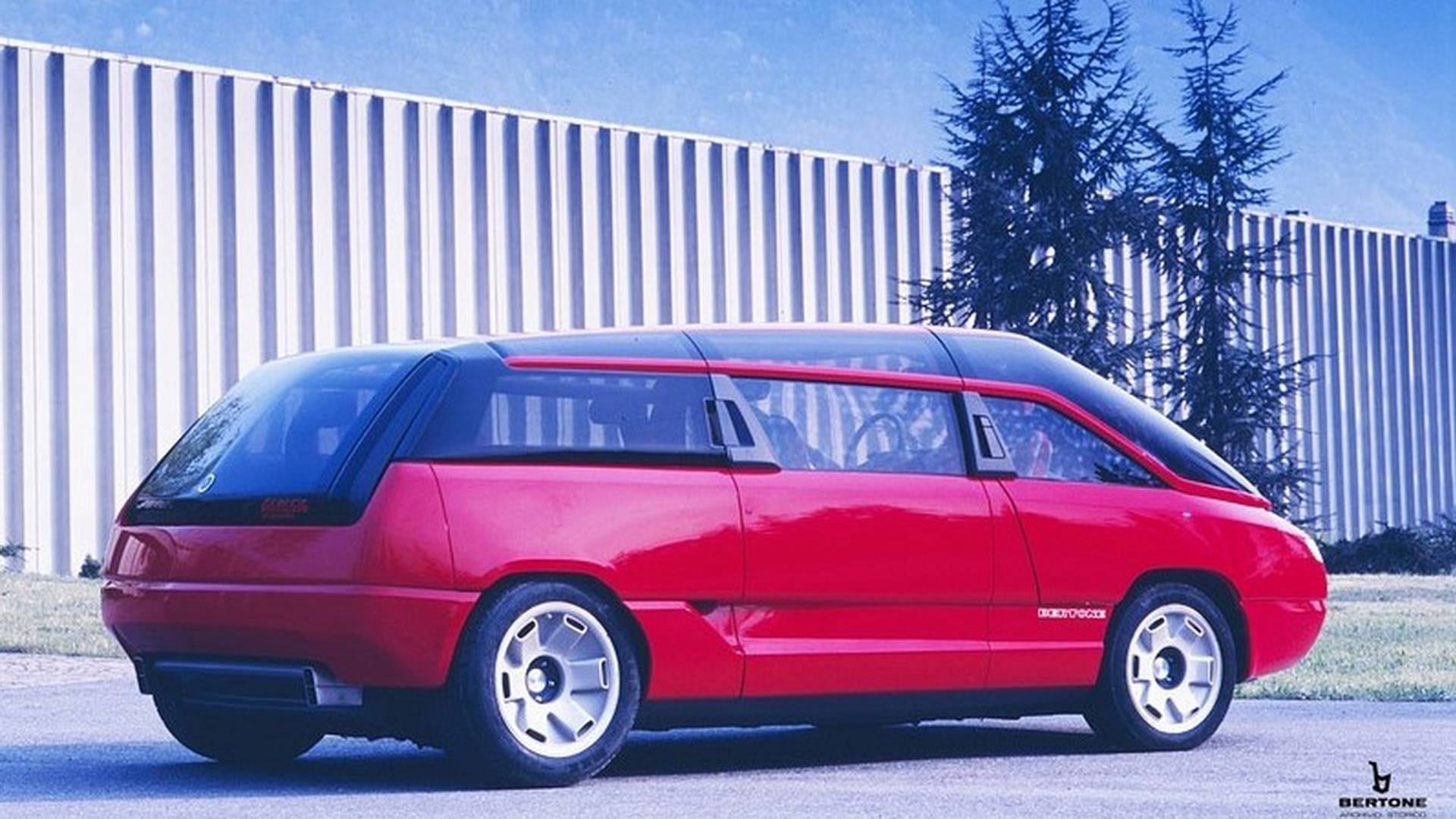
Imagine Lamborghini decided to make a minivan. Sounds absurd? That’s exactly what happened in 1988 when Bertone unveiled the Genesis — a wildly ambitious concept car that looked like the lovechild of a Countach and a space shuttle, built for a very stylish family of five. The Genesis wasn’t just another design study — it was a fully functional vehicle with the heart of a raging bull, yet wrapped in a body that screamed avant-garde futurism.
The mastermind behind this eccentric creation was Marc Deschamps, Bertone’s head of design at the time. A protégé of the legendary Marcello Gandini, Deschamps didn’t believe in playing it safe. With Genesis, he and his team explored what would happen if you infused Lamborghini DNA into something as mundane as a people carrier — without diluting the drama. The result was anything but conventional: dramatic angles, wraparound glass that looked like it came off a fighter jet, and suicide doors that opened like an invitation to a different dimension.
Genesis was designed not just to provoke but to function. Unlike many concept cars, it actually moved — and roared, thanks to a transplanted Lamborghini V12. But more than that, it made a statement: that great design doesn’t ask for permission. It experiments. It questions. It dares. And in doing so, Genesis became one of those rare machines that didn’t just look forward — it leaped into an alternate future and invited us to follow.
Read too: Top 10 most beautiful Bertone cars

Bertone Genesis specifications
-
Power: approx. 455 hp
-
Acceleration (0–100 km/h): unofficial, but estimated around 6 seconds
-
Top Speed: over 250 km/h (155 mph)
-
Engine: 5.2-liter V12 from the Lamborghini Countach Quattrovalvole
-
Transmission: 5-speed manual, mounted at the front — unusual for a V12 layout
-
Drivetrain: Rear-wheel drive
-
Dimensions: length ~ 4.8 meters, width ~ 2 meters, height ~ 1.3 meters
-
Technology: fully functional concept with working ventilation system, wraparound glass roof, and unique cabin layout
-
Additional Features:
-
Front suicide doors, rear sliding doors
-
2+2+1 seating configuration
-
Massive windshield that seamlessly extends into the roof
-

Bertone Genesis intresting facts:
It wasn’t just a showpiece — it was fully functional. The Genesis had a real Lamborghini Countach V12 engine and could actually move under its own power — though handling it was a challenge due to its unconventional layout.
The V12 engine was mounted in the front — for the first time in Bertone’s history. This was a bold and controversial decision, especially since Lamborghinis typically had rear- or mid-mounted engines. Bertone flipped expectations to surprise even the most hardcore fans.
The windshield and roof were made from a single curved glass panel. It wrapped around the front like a futuristic visor, giving the cabin a panoramic, spaceship-like feel — an incredibly advanced feature for 1988.
It had a strange middle seat. The Genesis featured a 2+2+1 seating layout — with the final seat placed in the center of the rear row, like a throne for a solitary passenger.
The entire car was built in under a year. Bertone developed it specifically for the 1988 Geneva Motor Show — and they were in such a rush that some finishing touches were made right before the premiere.
It foreshadowed the SUV era. Long before the Lamborghini Urus or Porsche Cayenne, the Genesis offered a mix of supercar performance and minivan practicality — a full decade ahead of its time.
Only one exists. Today, it rests in the Bertone museum (and occasionally appears at exhibitions) — still looking like a visitor from the future.

Read too: Matra history: one of the brightest and most unusual car brands in France
Сonclusion:
The Bertone Genesis was never just a concept car — it was a bold attempt to shatter expectations of what a car could be. A minivan with a V12 engine, suicide doors, and a glass canopy instead of a conventional cabin — it wasn’t a joke, but a serious glimpse into a future no one asked for, yet couldn’t ignore. It never made it to production, but it left a mark: a reminder that true design isn’t afraid to look outrageous when it’s driven by vision.
Future Classics: 10/10
Brand Recognition: 7/10
Design Modernity: 10/10
CarsCorn Score: 9/10